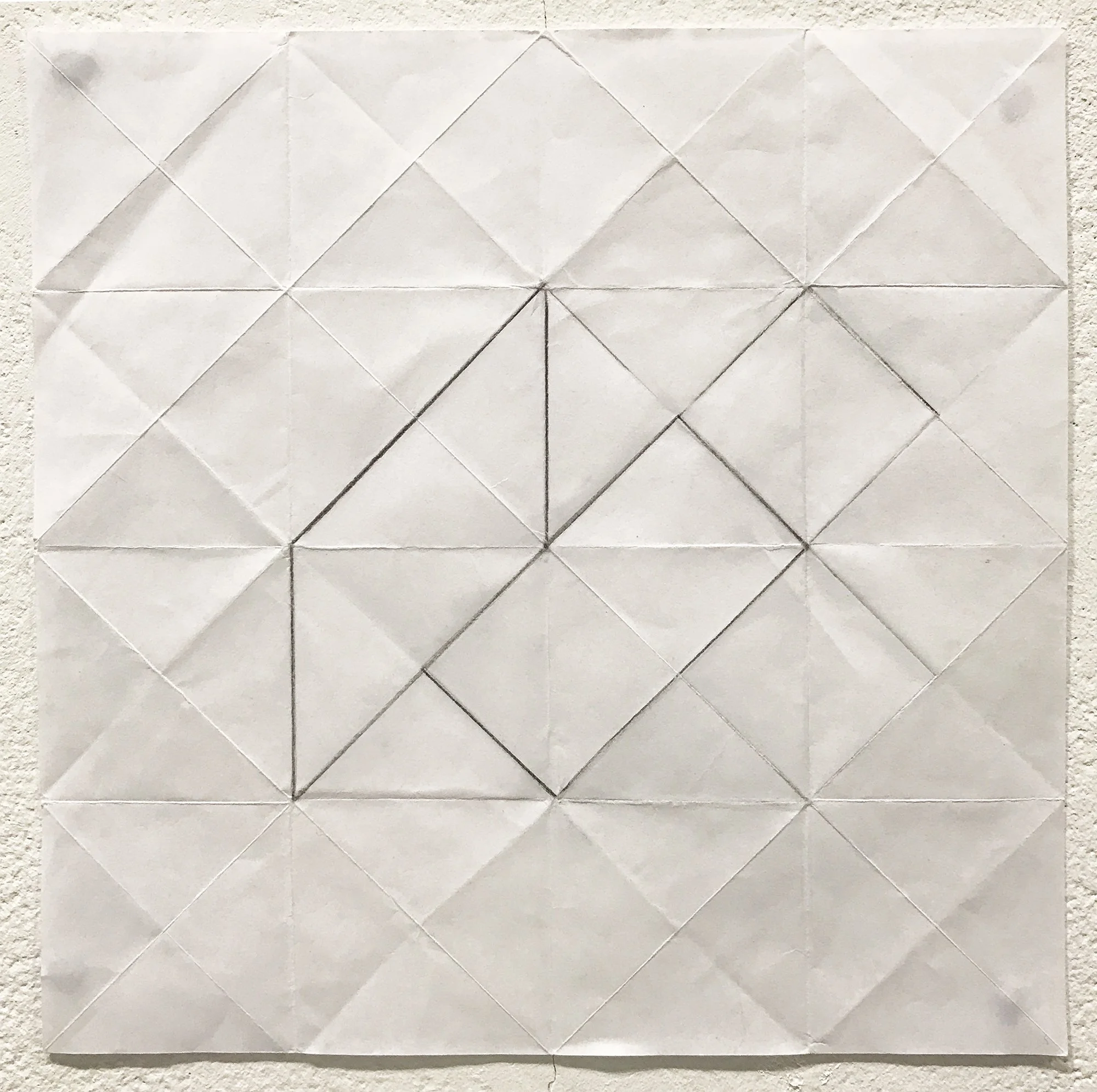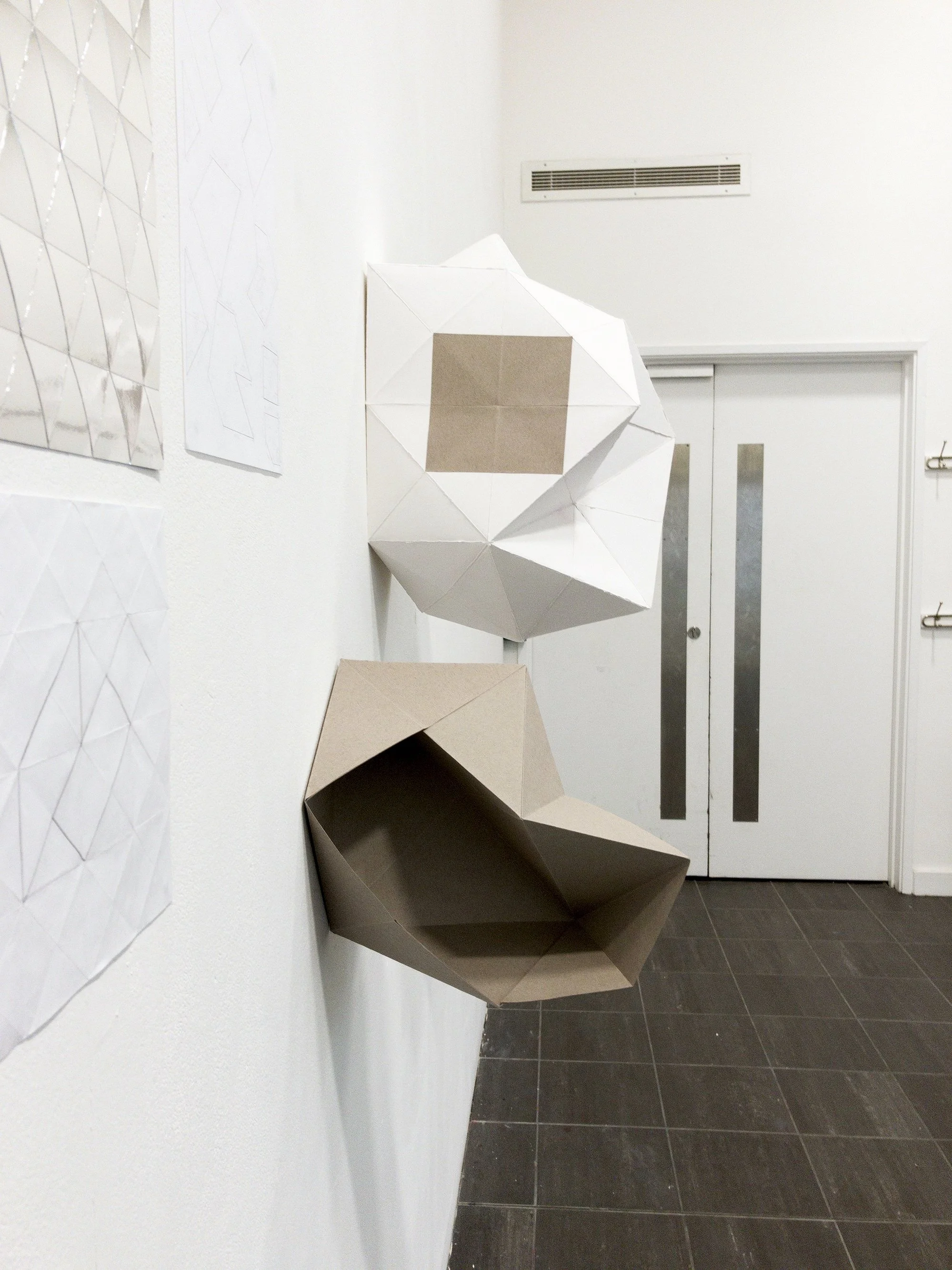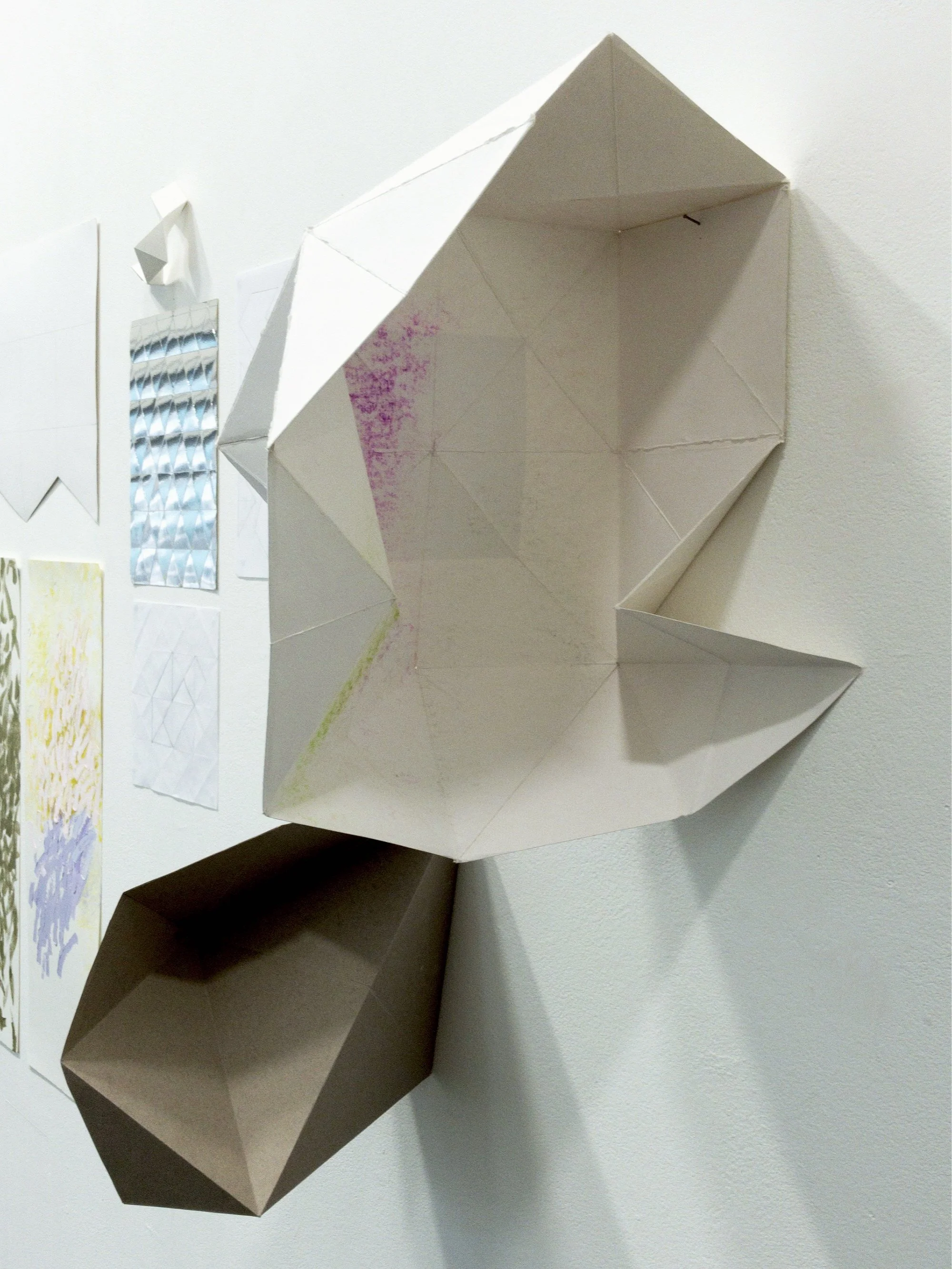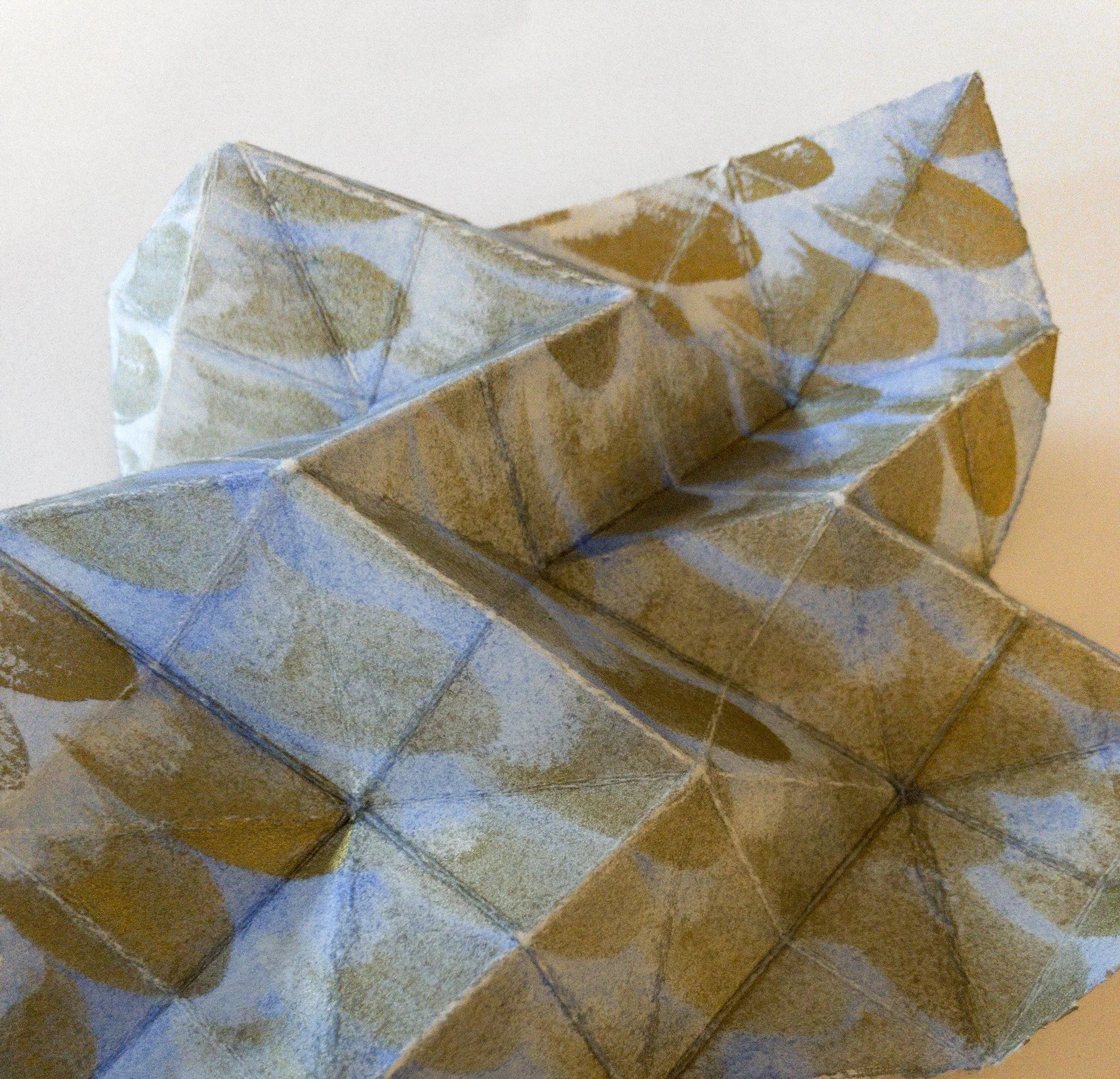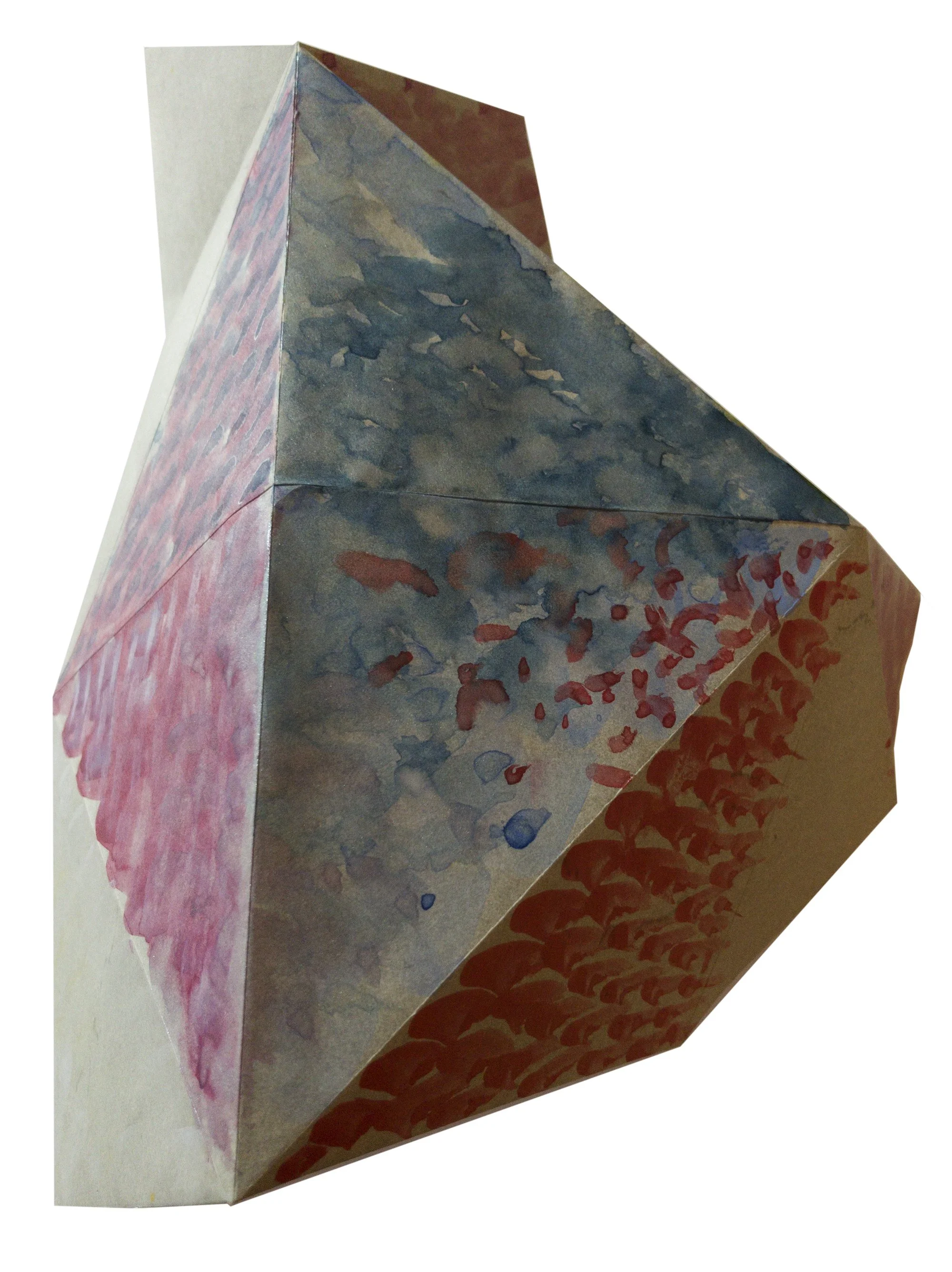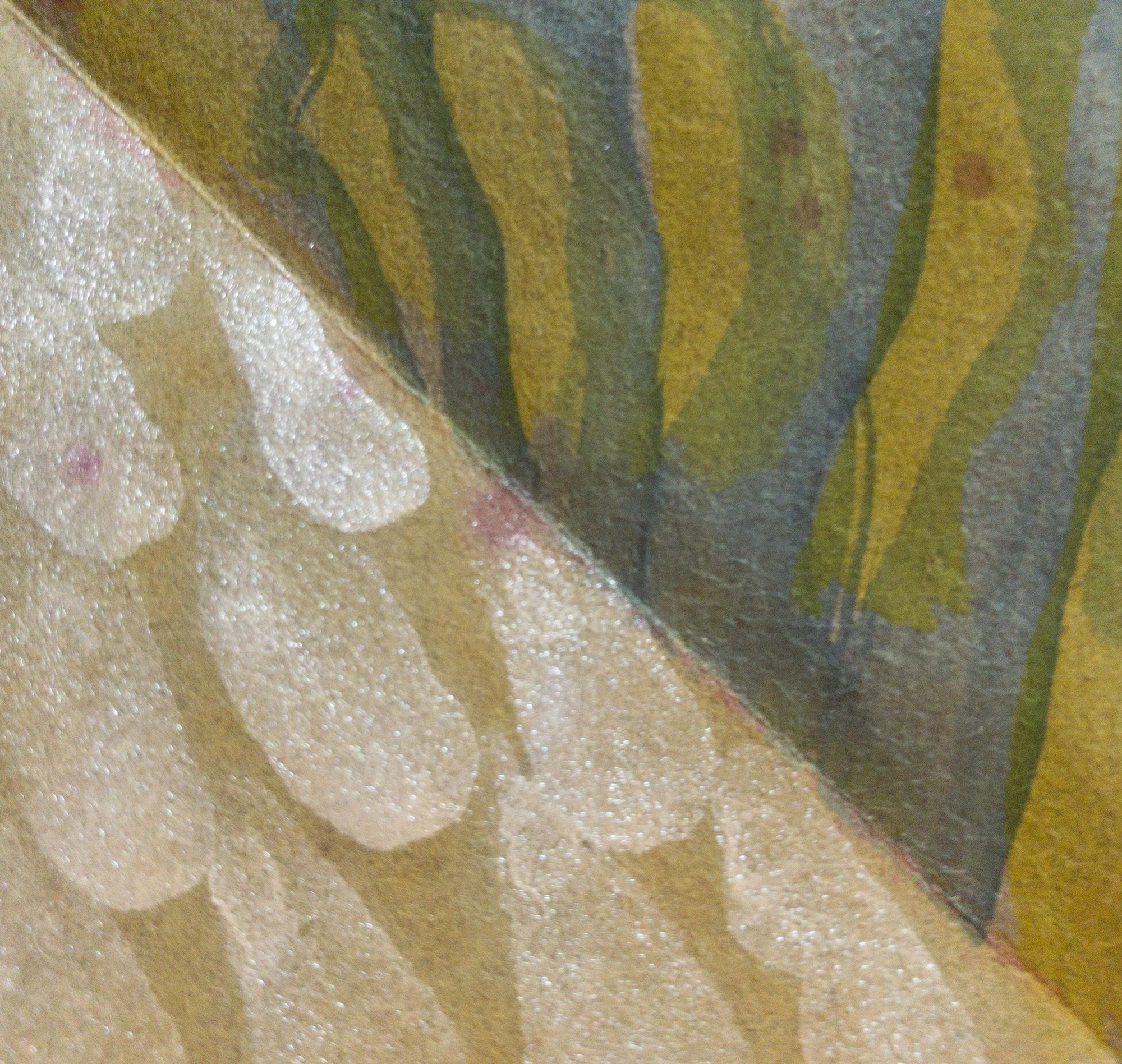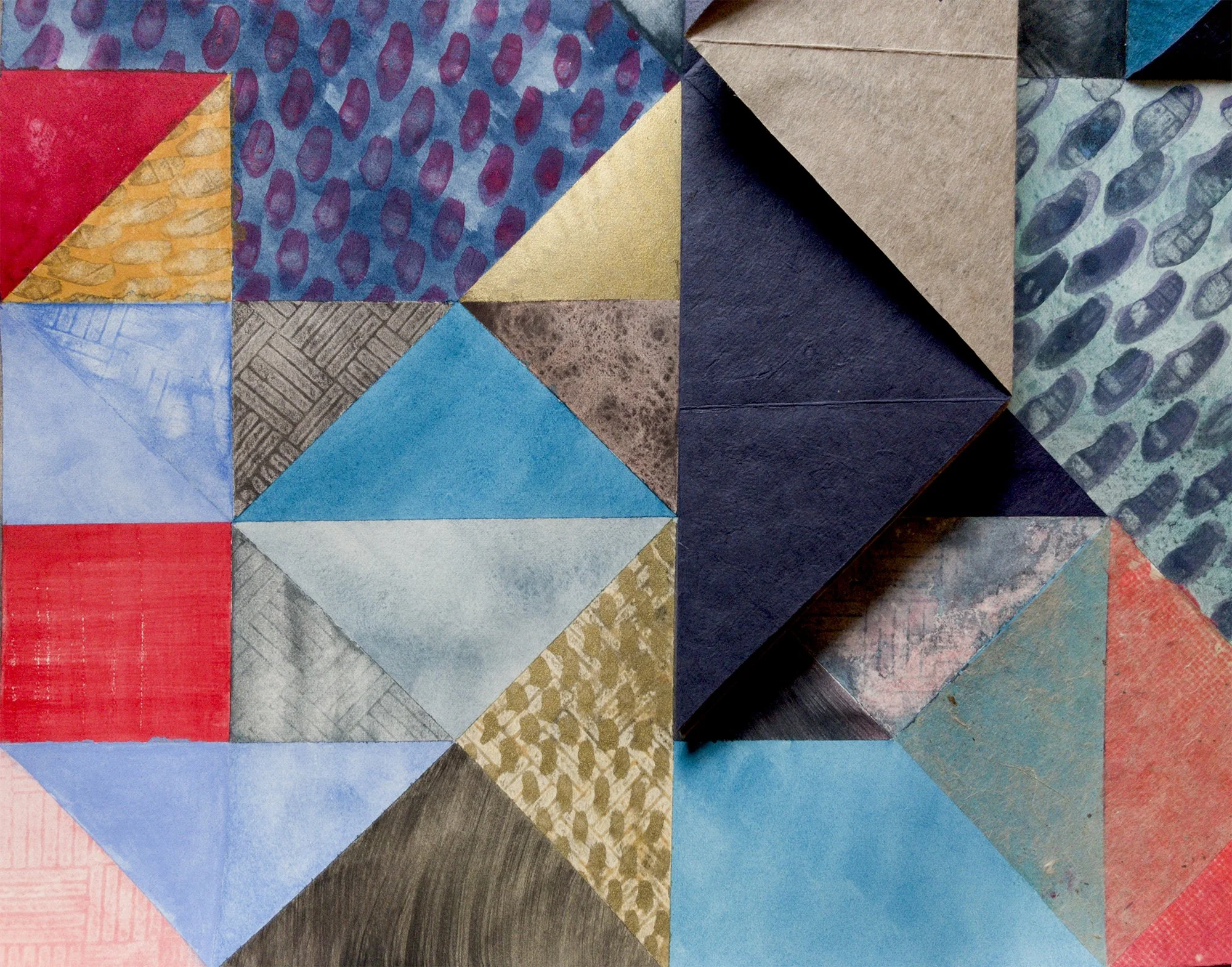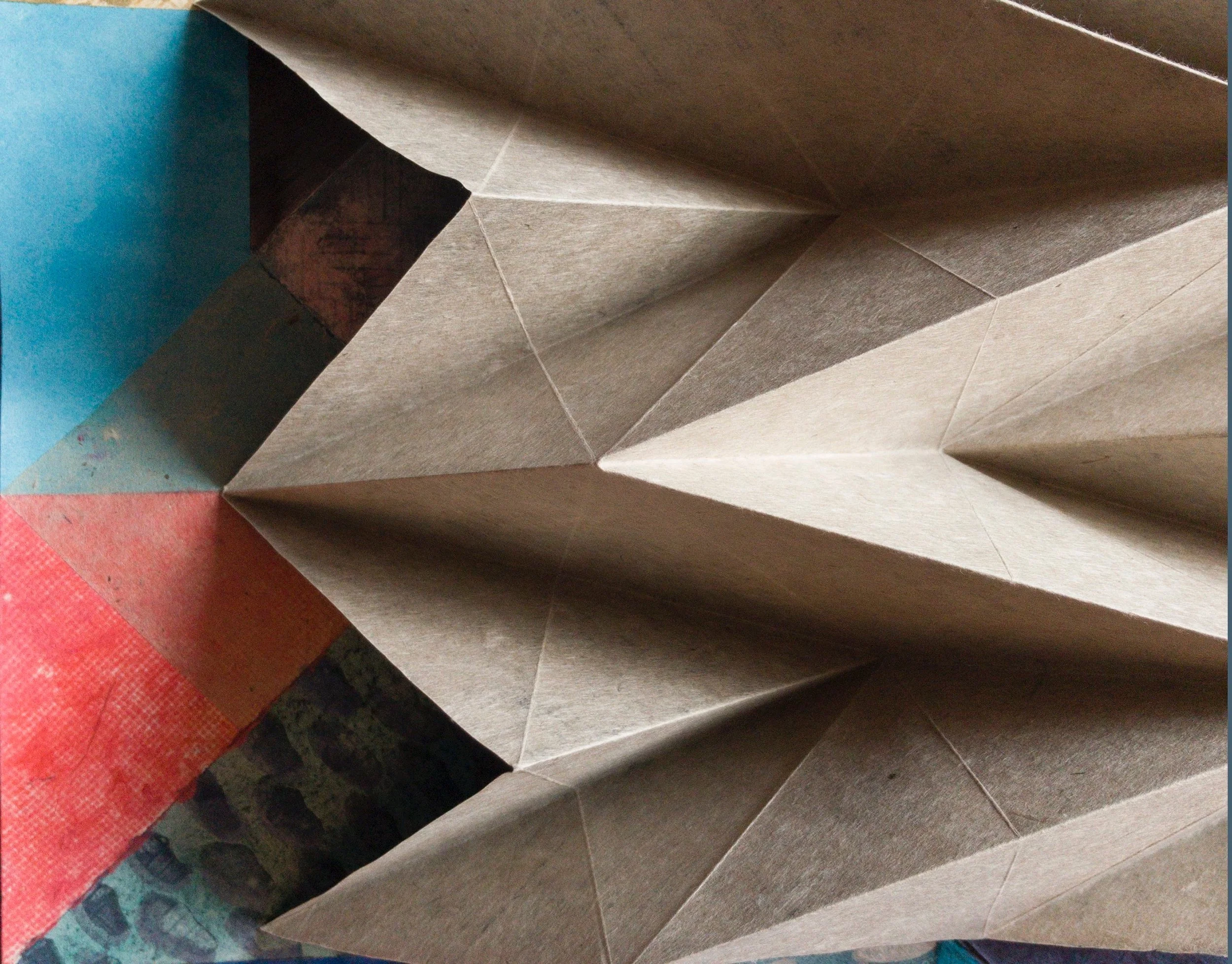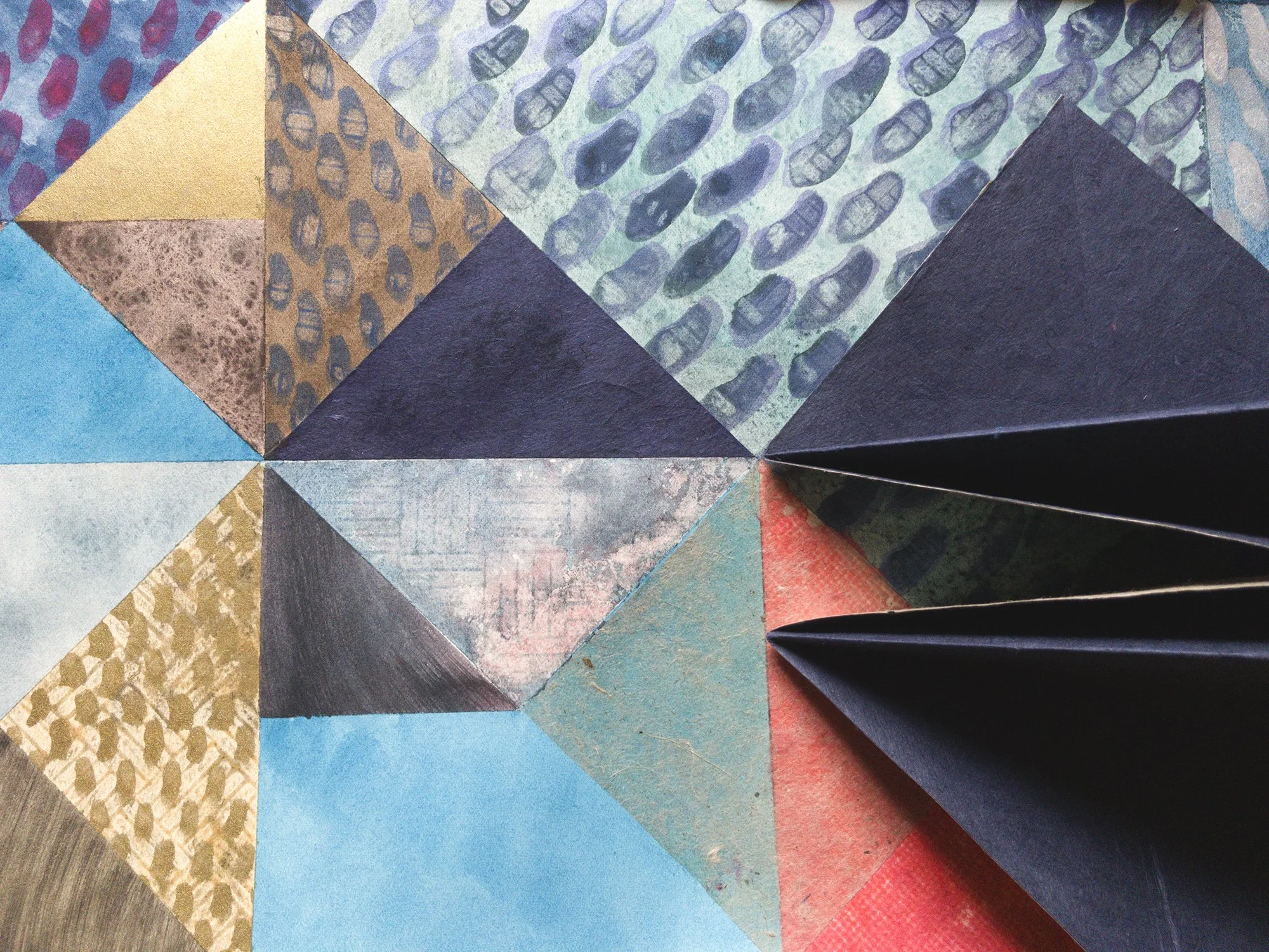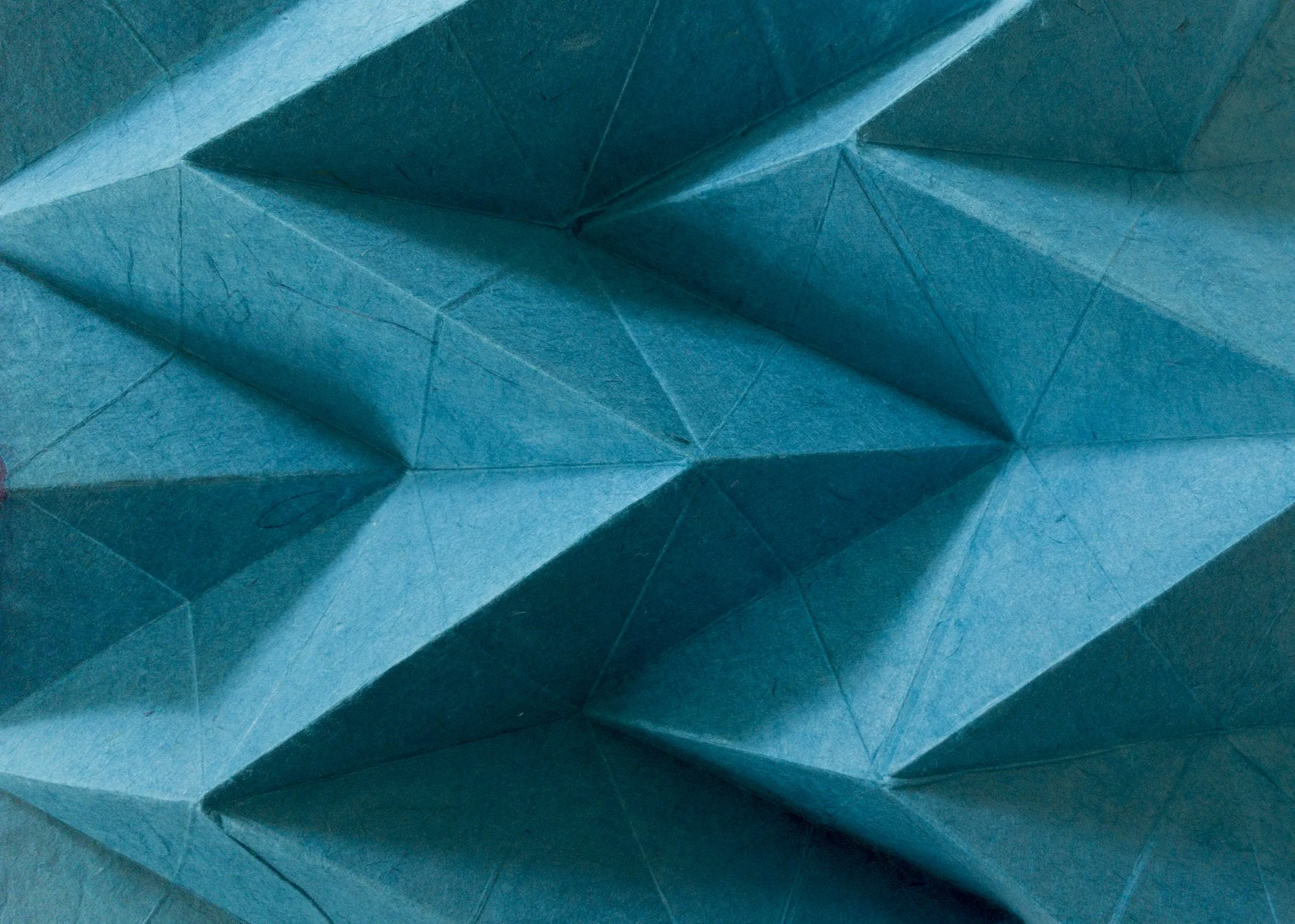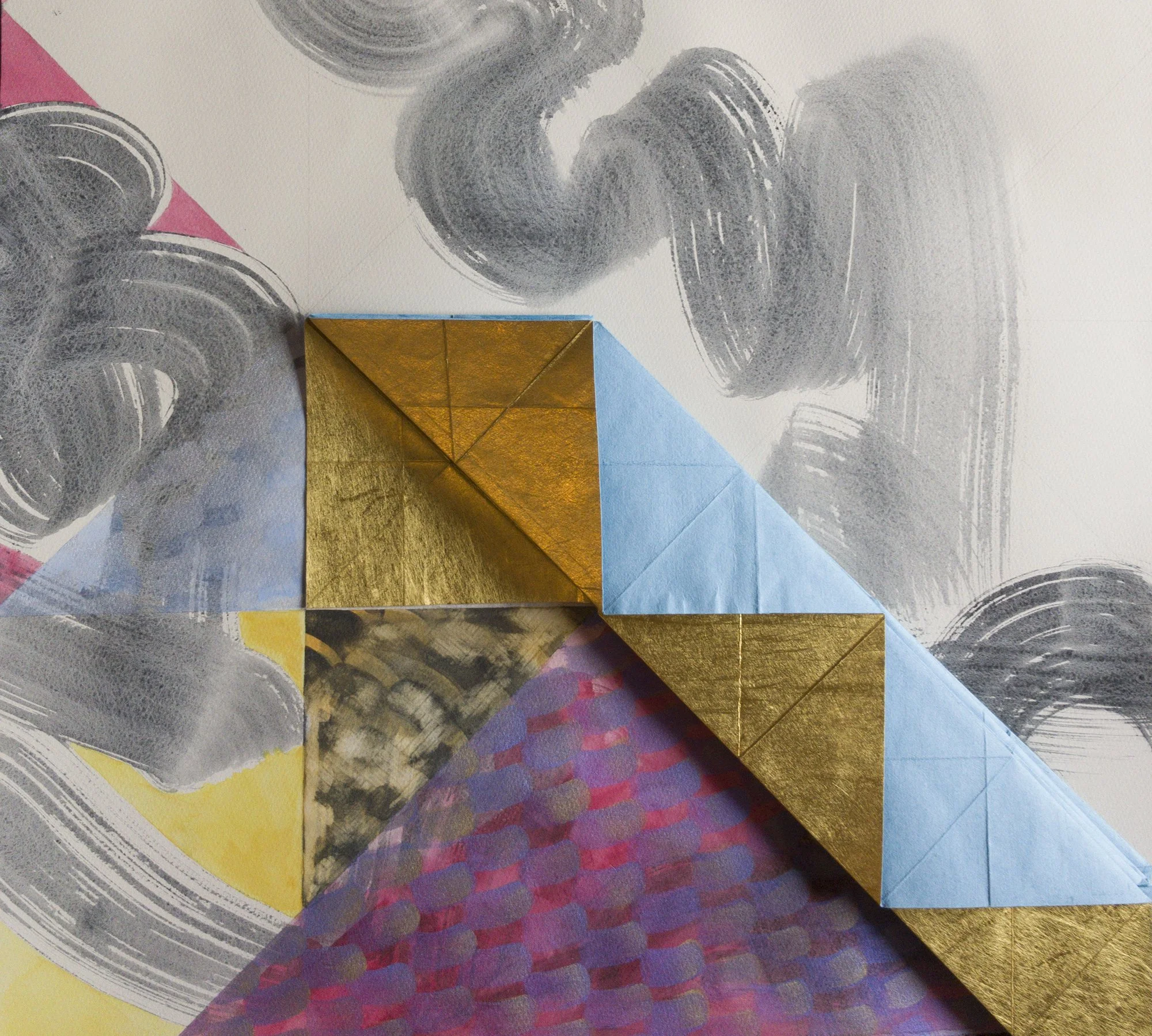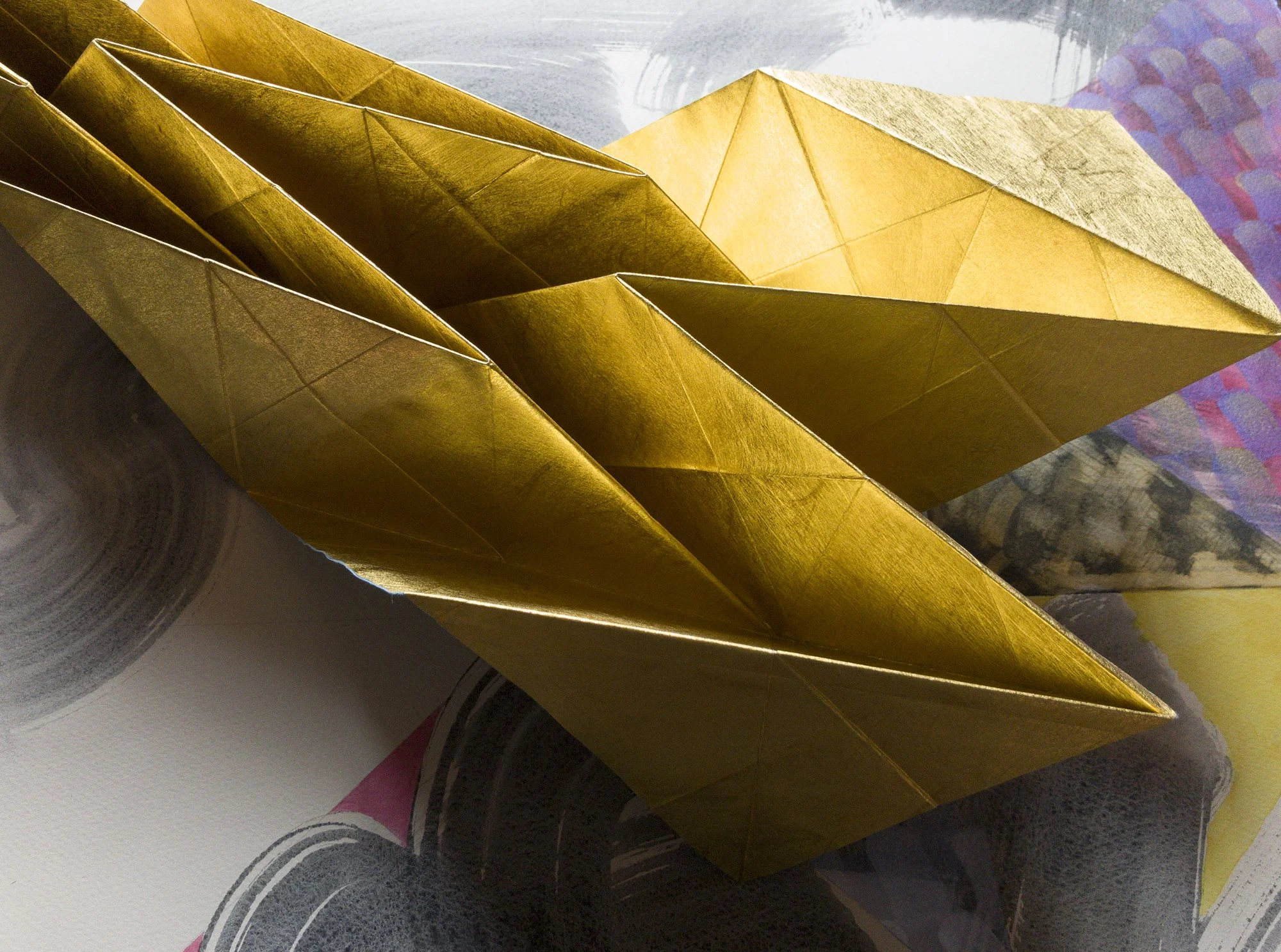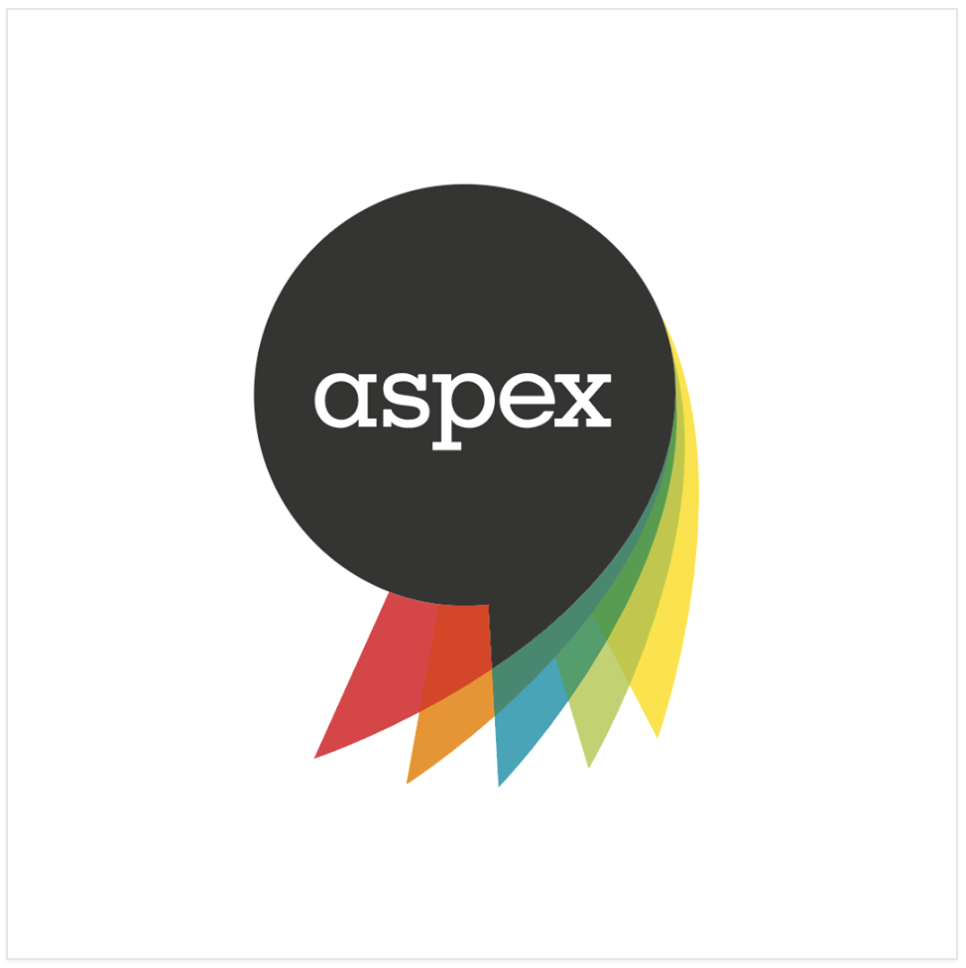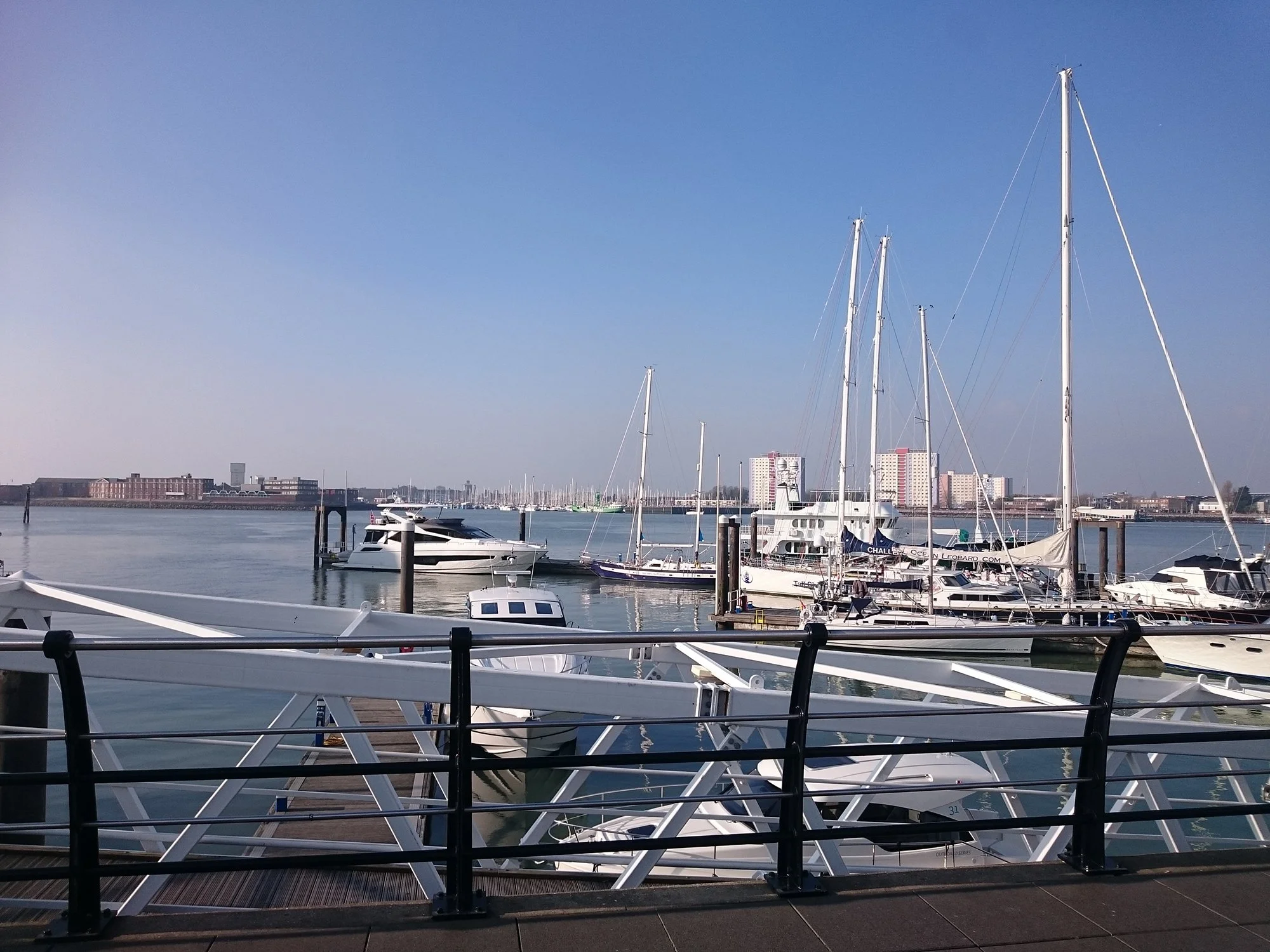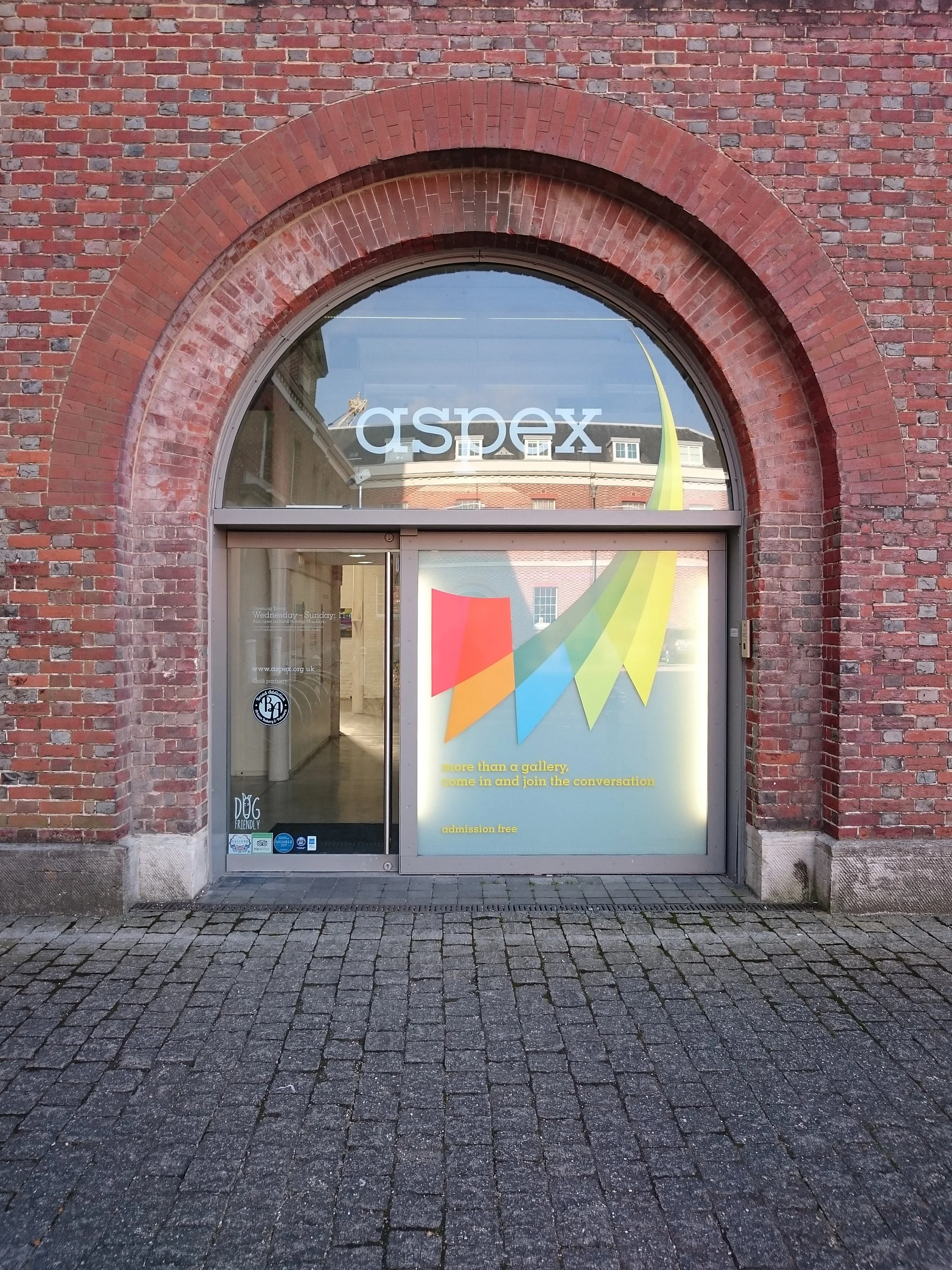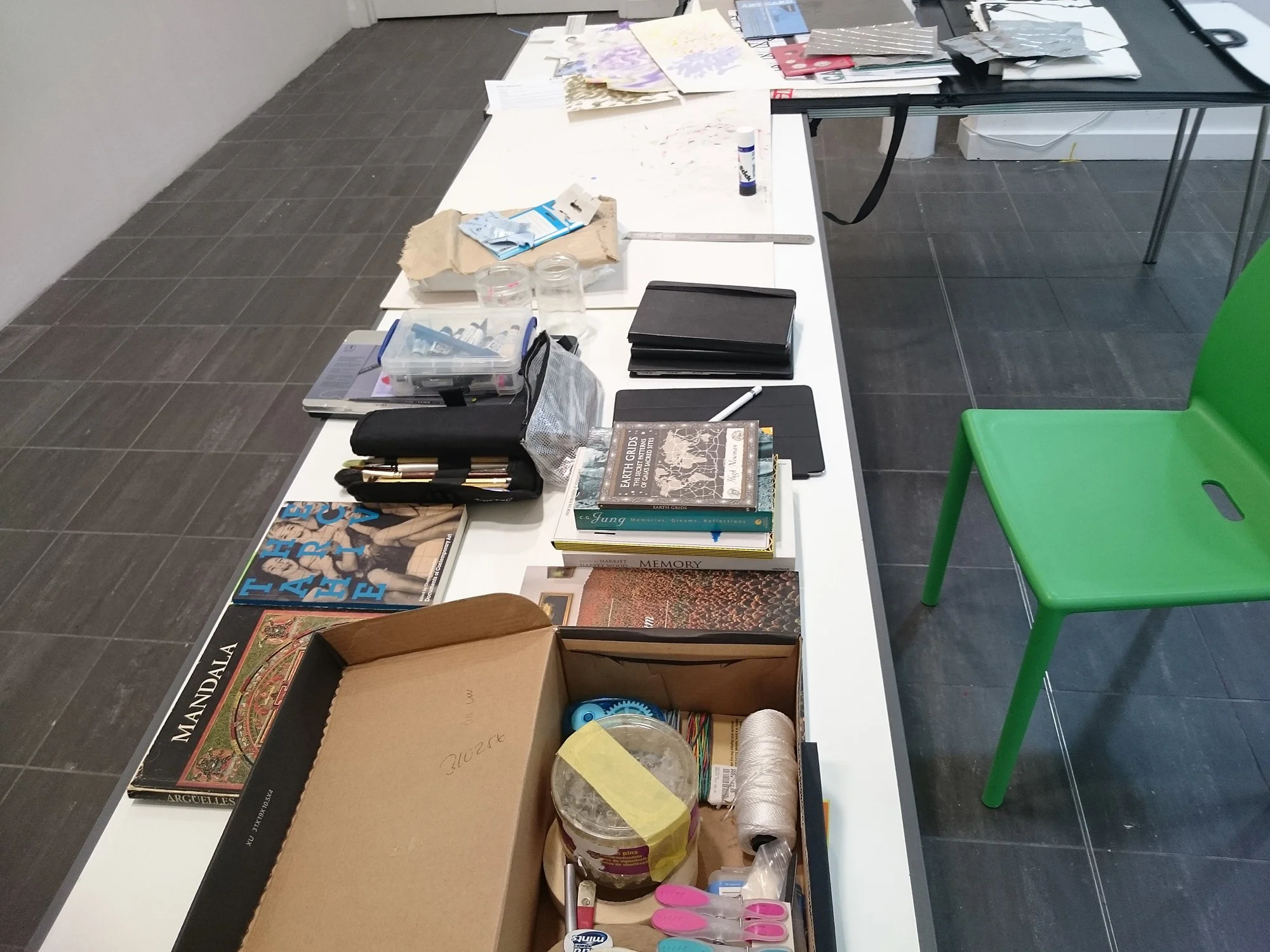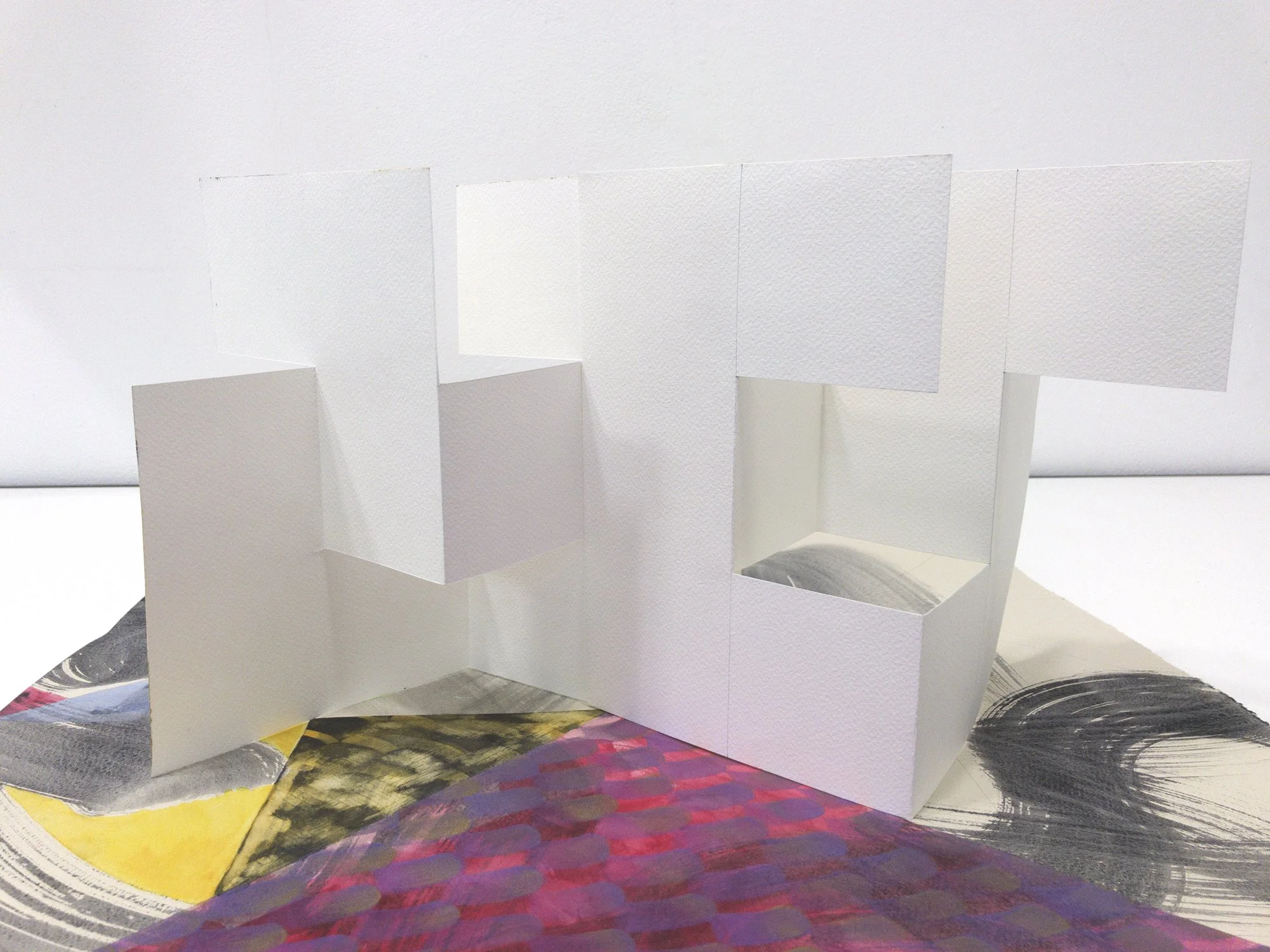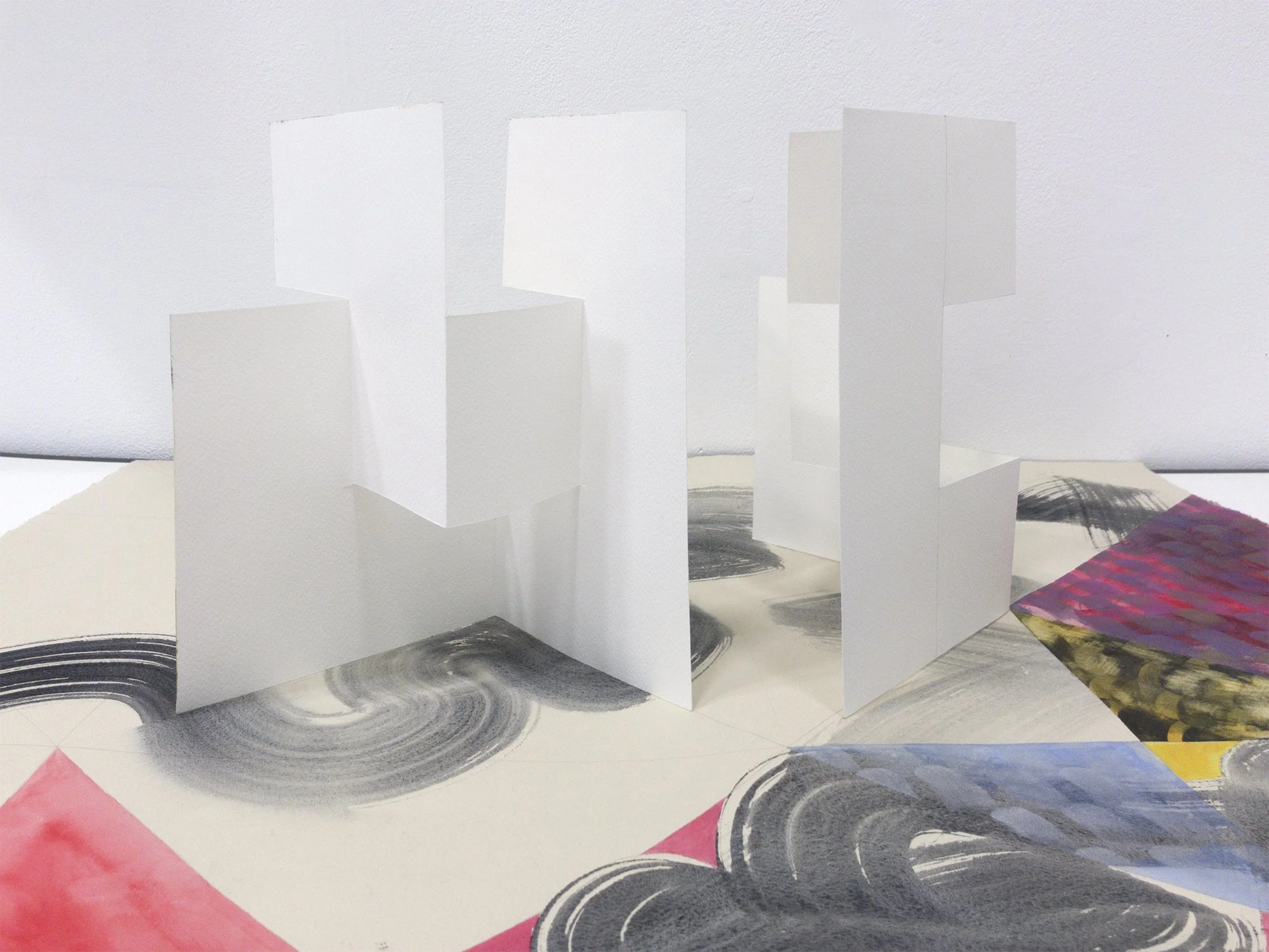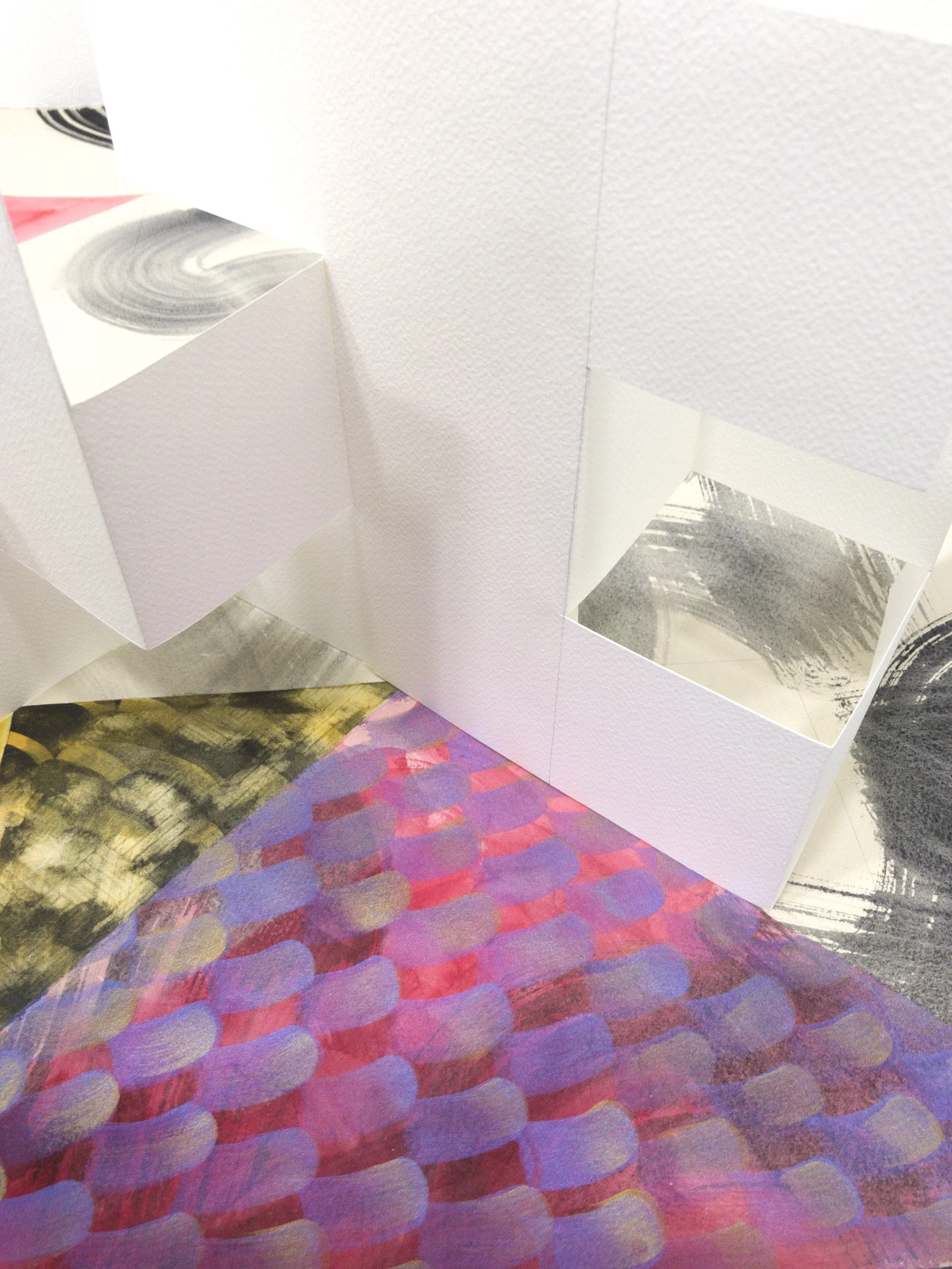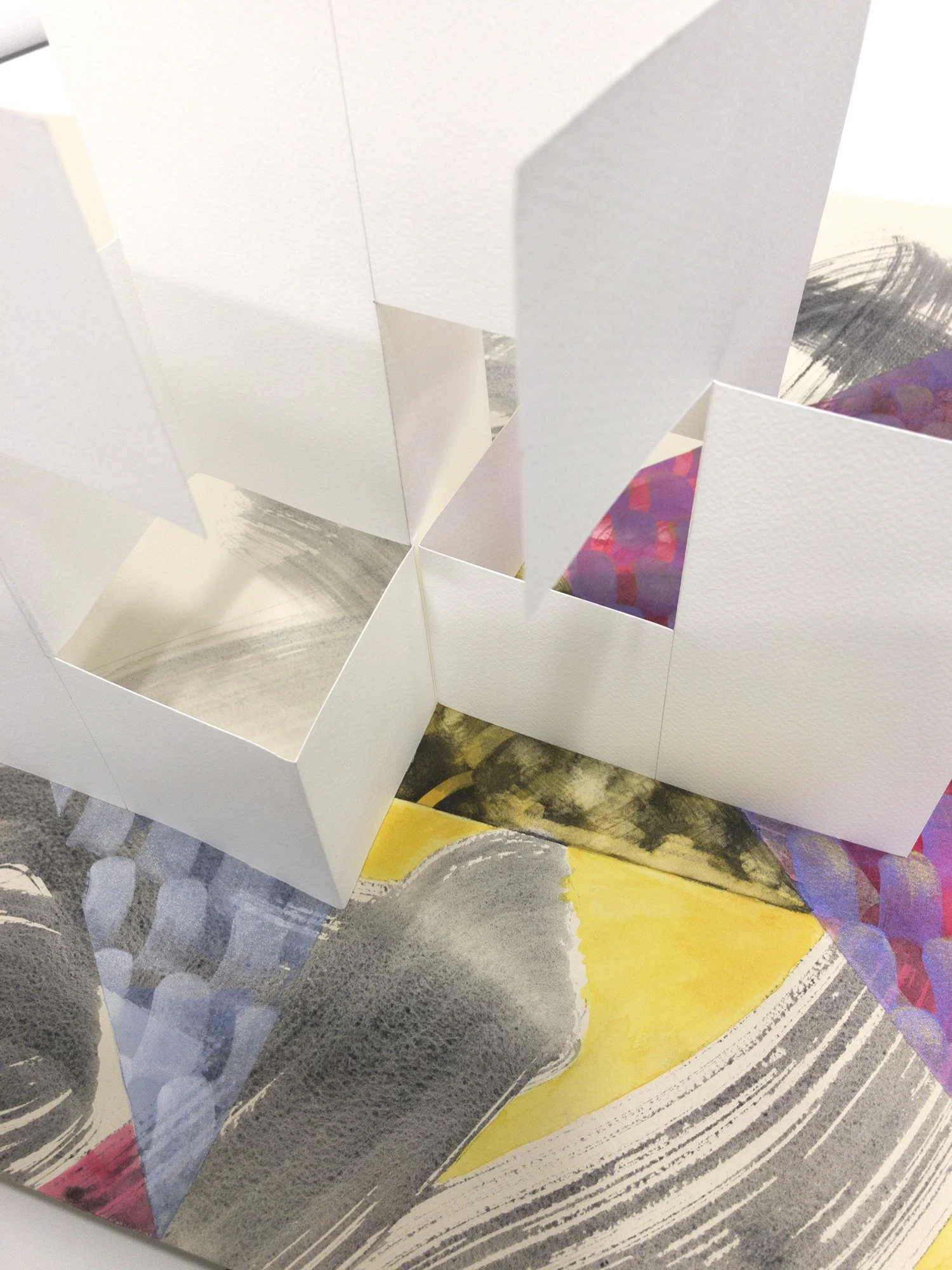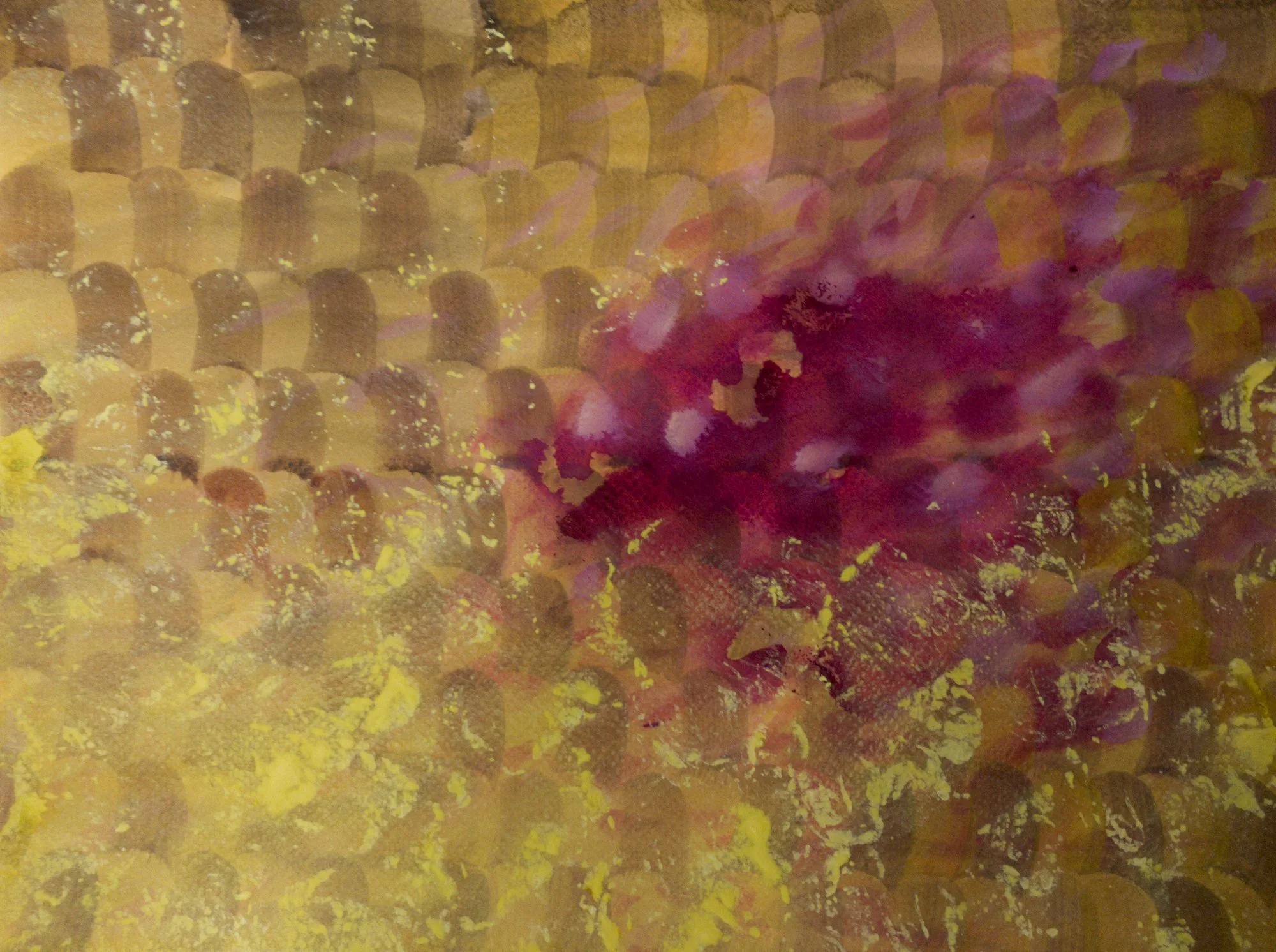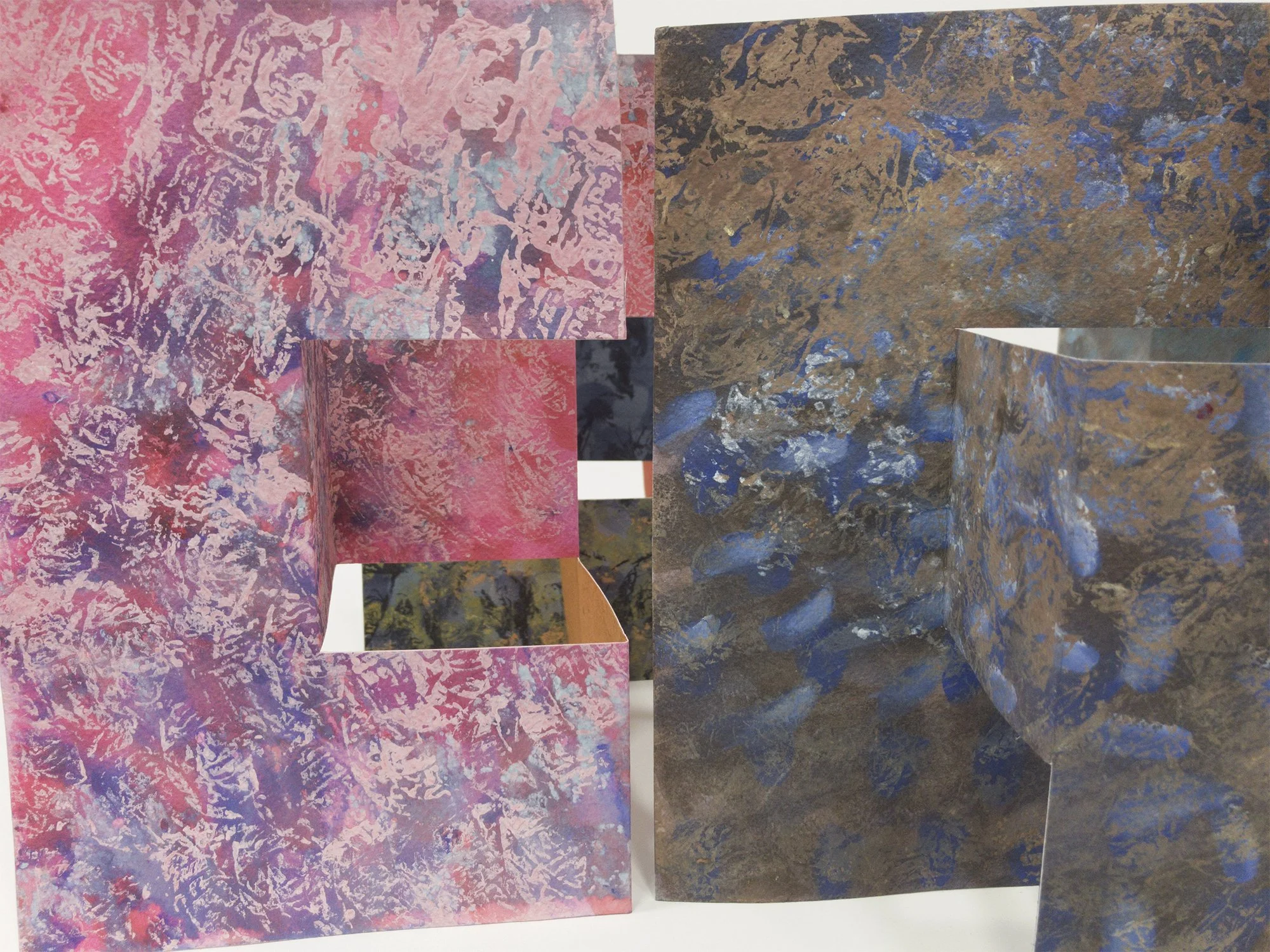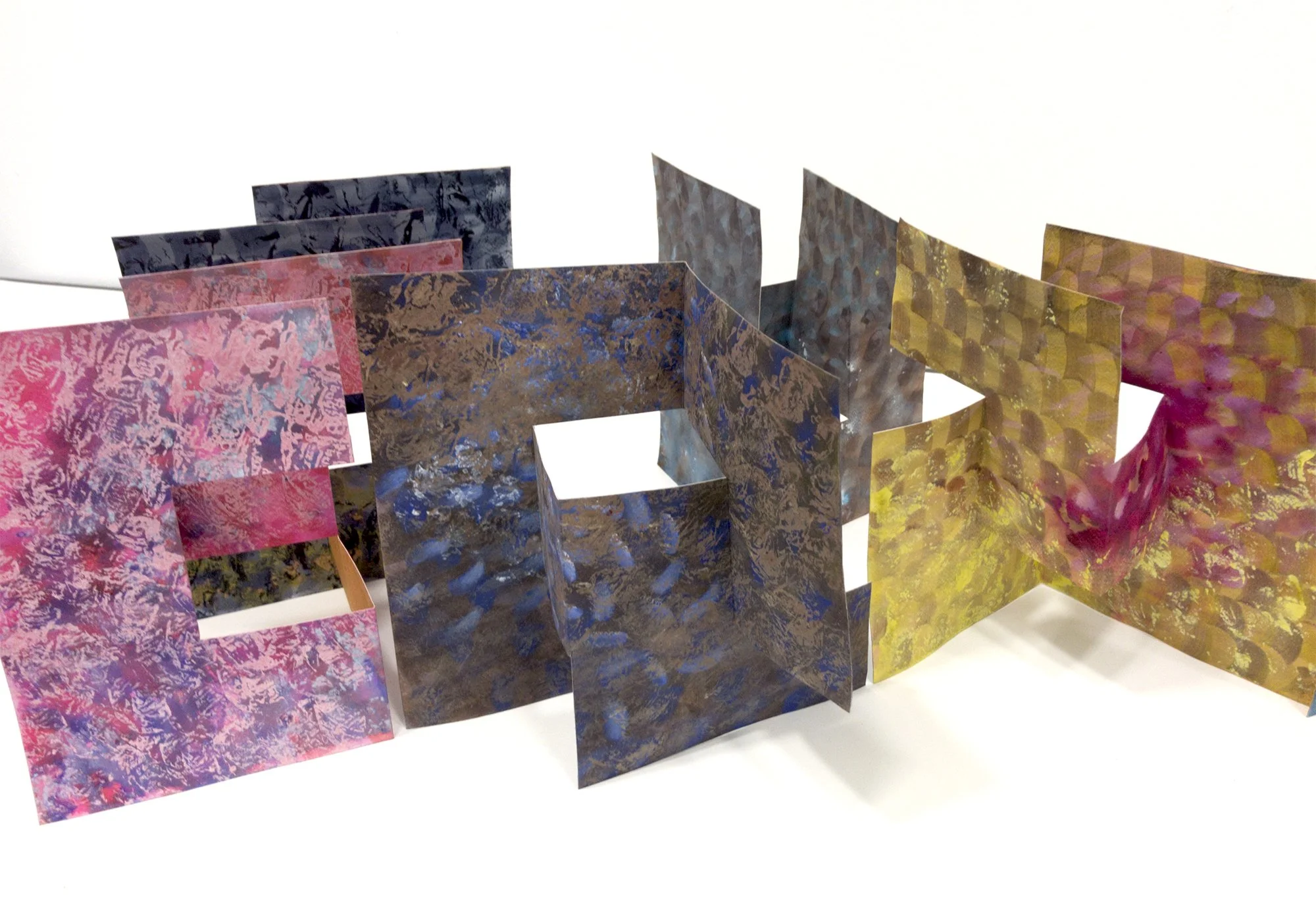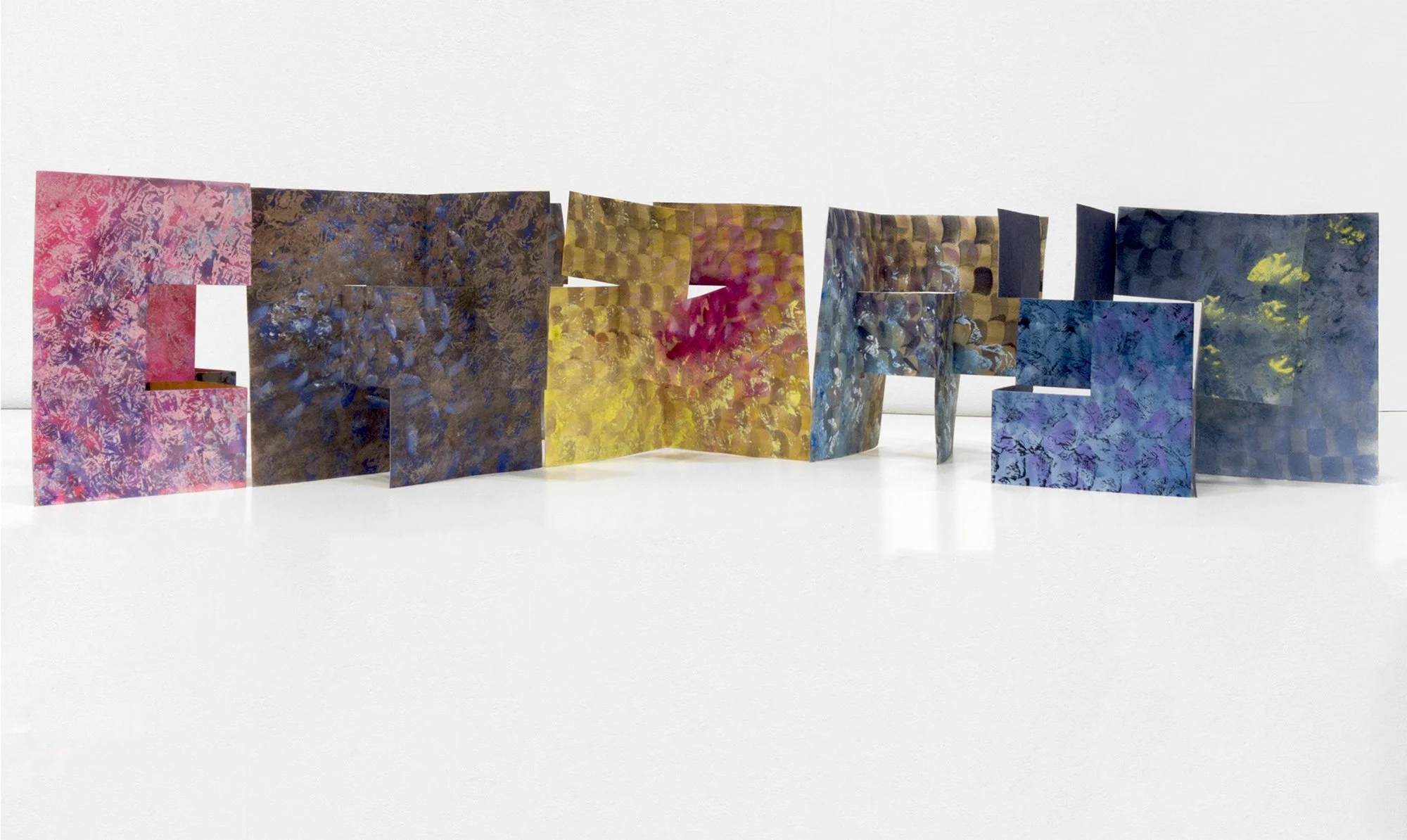ASPEX RESIDENCY
Unfolded Origami Fortune Teller with Drawing
I was delighted to be selected as Artist in Residence at Aspex Gallery this February and March. My proposal was to use the space as a think tank for a new project that would explore several strands of enquiry, including, memory, childhood games, divination and magical thinking. The starting point was geometry, specifically the geometric configuration of the childhood game, the Origami Fortune Teller, which is made from a single folded sheet of paper that becomes a 3D kinetic object used for basic fortune telling. Geometry and sacred geometry have been of interest to me for some time now, geometric forms or the depiction thereof often appearing in my drawings and paintings, as well as, installation and animation work. I'm interested in how geometry arises in entopic imagery from within the brain; how it exists in nature, such as in the crystaline structures that condense and travel over time from the earth's core; that it might be primordial but also highly sophisticated. Plato believed geometry to be the highest form of beauty.
For this new work, geometry would be the medium through which I explore different ideas in 3D form, firstly with folded paper and paint on paper and then later with deconstructed paintings that use and challenge the use of the traditional materials that are associated with painting, such as, stretchers, canvas and oil paint.
I have always loved paper and making work on paper. I had a good selection of different papers to work with, from soft, heavy 100% cotton papers to a variety of Japanese and Himalayan papers. I also used Japanese Kuretake watercolour as well as, Daniel Smith watercolour, some of which is made from semiprecious stones like, Lapis Lazuli, Garnet and Rhodonite. There is something about materials such as these that requires reverence; something that connects you to the traditions of using the materials. In Shinto, ritual paractices are used to forge a connection between the ancient past and the present and material is often thought to contain essence or spirit. This is how I see the materials that I've been working with, as being imbued somehow with spiritual essence. The use of markmaking, sometimes repetetive and methodical can feel like a meditation or invocation. Shodo, a form of Japanese calligraphy comes to mind, as well the wabi sabi concept of beauty as imperfection, impermanence and incompletion.
The square and isosceles triangular shapes that exist within the folded lines of the origami fortune teller can be used to create both tessellated, symmetrical forms and also, irregular, asymmetrical forms. I like the way that the paper is transformed from the 2D to 3D, how something quite delicate and unstructured can be given rigidity and the stability of structure. It is interesting to explore the myriad ways in which the fortune teller can be folded depending on the number of folds added to its basic template; as more folds are added, the number of triangles and squares increases and more complex forms can be achieved. The fortune teller is usually used by children as a tool for play and divination with each flap opening to reveal something about the future. There is also a something playful in discovering the different forms as they emerge from the folds.
I continued to experiment with the Fortune Teller template but also wanted to combine it with other folded forms that use elements of the same geometry. I picked out the square shape in sheets of rectangular paper, cutting along some lines and folding along others to create structures that look architectural. I find it interesting that one can see how people in the past envisioned their utopian futures through architecture. These new structures that I made with paper are so precarious that it takes little to knock them down. When I placed them together in a loose tessellated arrangement, they reminded me of a house of cards or colourful favelas, precarious slums and repetitive, stacked, utilitarian housing: of failed utopian visions. Concepts of failed futures, unfinished or forgotten pasts and the potential contained therein, interests me. I want to expand these ideas into work that is immersive and that physically responds to the space that it inhabits.
At this point, my residency was in its last week and fast approaching its end. The next phase will invlove experimenting further with my painted paper forms and finding ways of creating part relief, part sculpture by arranging the work on the walls, floor and possibly other surfaces. I'm also interested in exploring the possibility that a large, sprawling piece can be folded down into a small object, transported and erected somewhere else.
